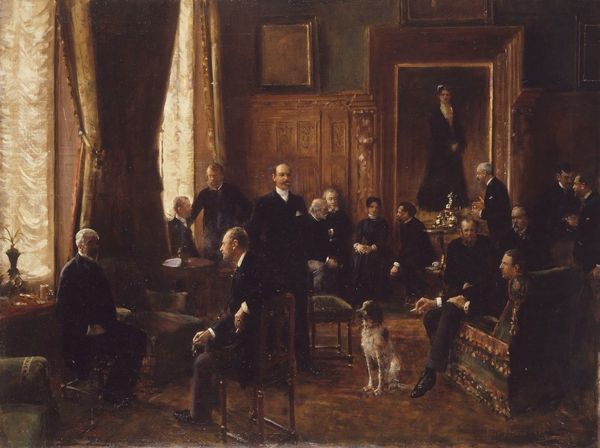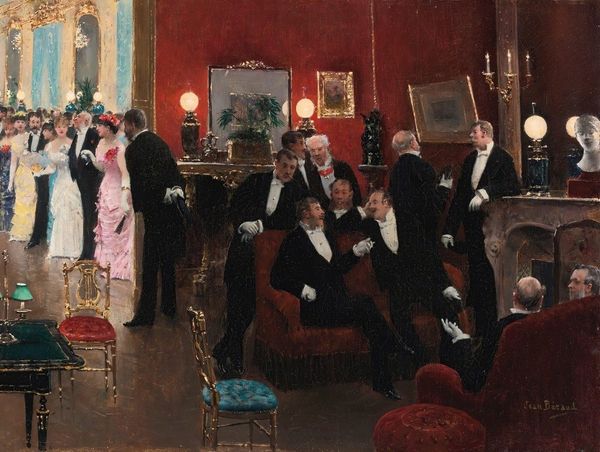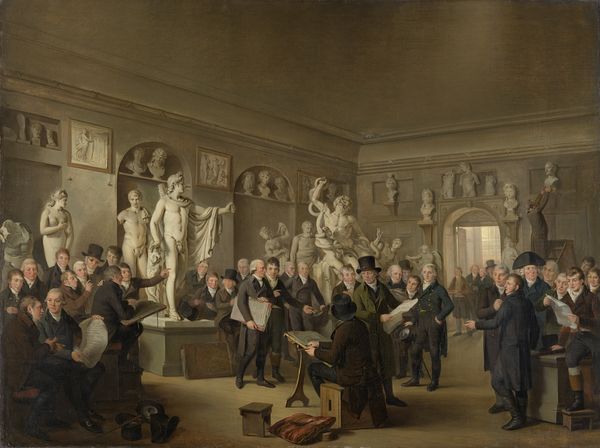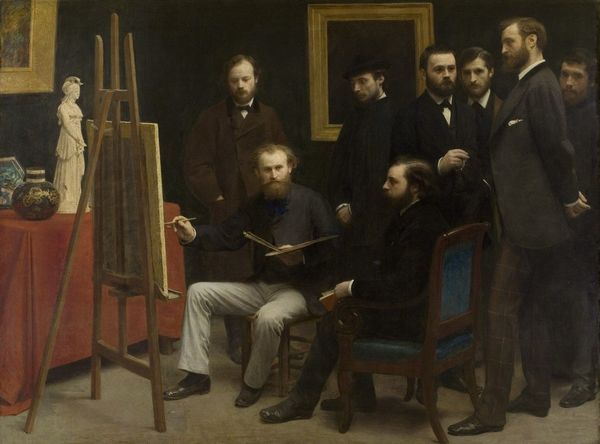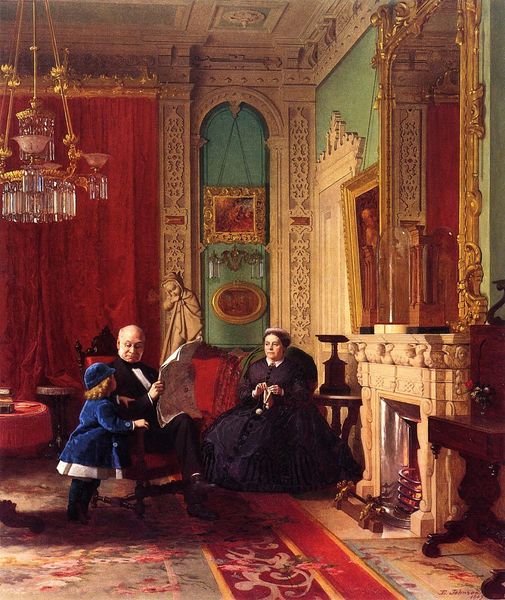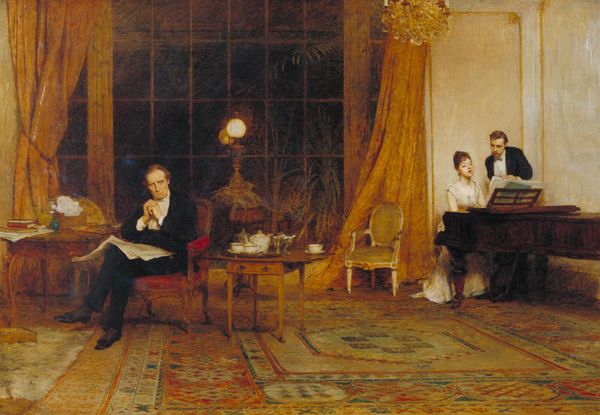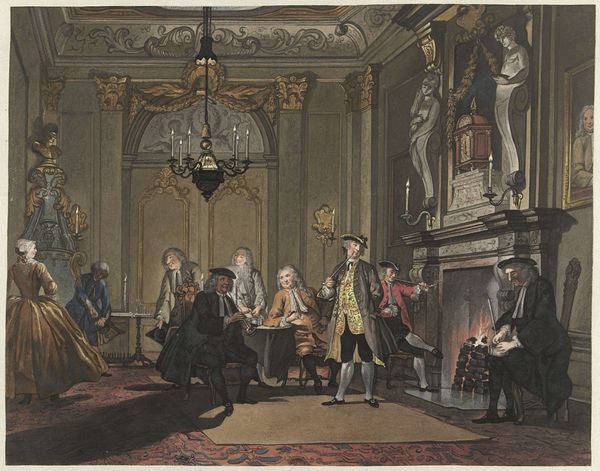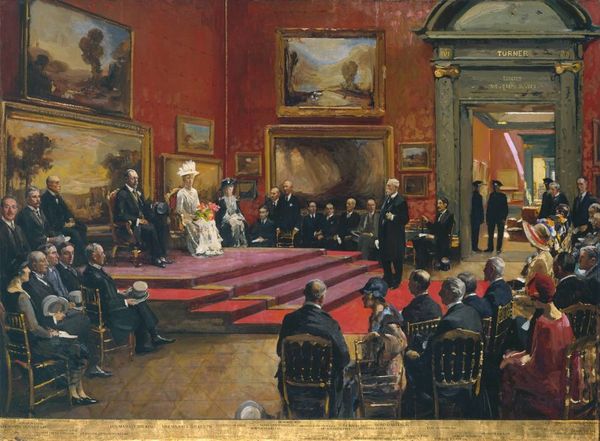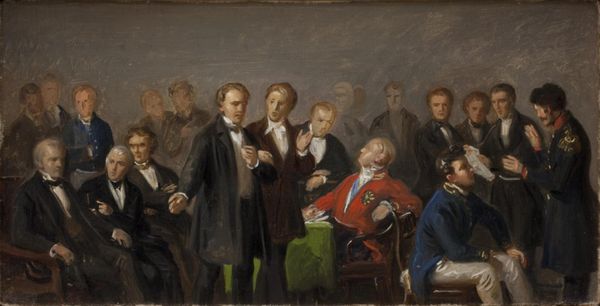
Copyright: Public Domain: Artvee
Curator: Today we’re looking at James Tissot’s 1868 oil on canvas, "The Circle Of The Rue Royale." Editor: What immediately strikes me is the air of subdued opulence, almost world-weariness. The palette is quite muted, with browns and creams dominating. Even the clothing seems to blend into the classical architecture in the background. Curator: It is certainly a study in societal restraint, isn't it? But notice how Tissot uses oil paint to meticulously render textures – the checkered marble floor, the folds in the men’s jackets, the soft fur of the dog. These details point to the craftsmanship highly valued in academic art of that era. How do you feel it informs the understanding? Editor: The dog provides a contrasting symbol! In this case a sleeping or lazy dalmatian. The breed itself has associations of aristocracy; its position is an intentional reminder to associate laziness with this scene's upper classmen. What might seem to be an otherwise unremarkable compositional addition actually holds a critical function for imbuing this group portrait. Curator: Precisely! These men were members of the Parisian social and artistic elite, and the location, we presume, is a fashionable gathering spot. What interests me further is the use of portraiture itself; traditionally portraiture existed to preserve appearances and portray status for only the upper class, not only has photography since made it affordable but it suggests Tissot’s own upper-middle-class identity that he has now immortalized the wealthy who he wants to emulate. Editor: Very interesting take! Looking closely, I am captivated by each face. Tissot seems interested in rendering an assortment of characters: thoughtful, melancholic, haughty... it invites narrative speculation. A play, perhaps, staged on the edge of Parisian society. Curator: The 'play', as you call it, occurs within an important context for Tissot himself as he, being of middle-class origin, attempted to secure his position in Parisian art and society at the time. He made paintings for people who purchased status and access to high society. That these portraits in themselves serve almost like trophies from hunts, where it's more so Tissot hunting upper-class acclaim, suggests the nature of this kind of capitalistic consumerism! Editor: So the canvas itself is a material testament to aspiration. Fascinating. What appears static on the surface overflows with implication once we consider process and motivation! Curator: Indeed. Thinking about this, I have to admit a deeper respect for what these static portraits reveal as well as how our contemporary lens gives greater context.
Comments
No comments
Be the first to comment and join the conversation on the ultimate creative platform.
